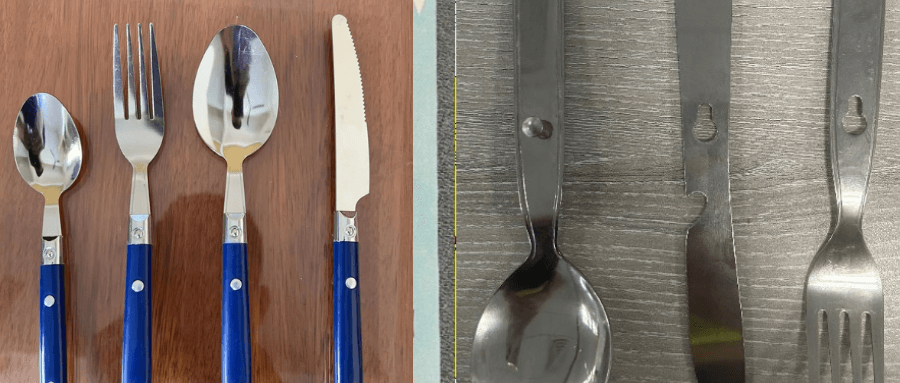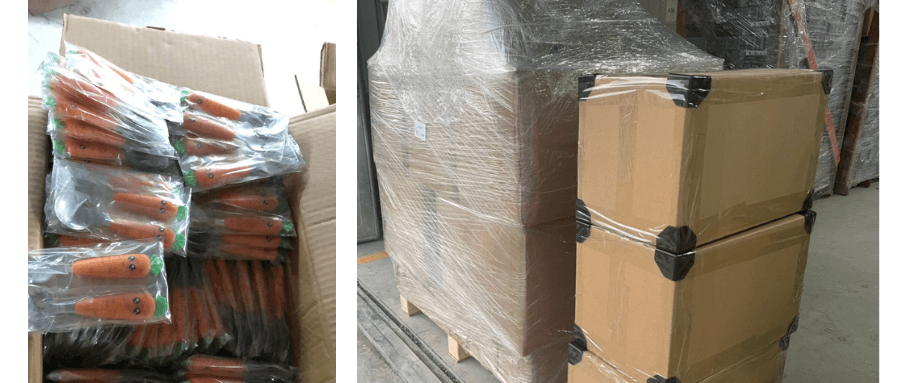As a stainless steel flatware supplier with over a decade of experience, we can tell you why some stainless steel flatware suppliers offer low prices. In this blog, we will explore these reasons and help you understand the secrets behind affordable flatware.
The difference between cheap flatware and premium flatware is in the following 5 areas, which we will explain in detail:
1. MATERIAL: Stainless steel can vary in price depending on its composition and proportion. Some suppliers may use cheaper materials. Stainless steel cutlery can be made from different grades of steel, the higher the grade, the more expensive the price. Some suppliers may use lower grades of steel to reduce costs, but this may affect the quality of the cutlery, making it prone to rusting or warping. Below are the differences between the main common grades of stainless steel.
|
| Advantages | Disadvantages |
| |||||||
| 201 |
| Relatively less expensive, better corrosion resistance | Lower tensile strength, prone to rust | steam table pan, stainless steel bowls, and basins, etc | |||||||
| Contains 17% -19% chromium and 10.5-13% nickel | Good corrosion resistance, good elasticity |
| Children's flatware | |||||||
| 410 (13/0) | Contains 15% and 18% chromium |
|
| Generic quality flatware | |||||||
| 430 (18/0) | Contains 16% and 18% chromium | Relatively inexpensive, good corrosion resistance |
|
| |||||||
| 316 (18/10) | Contains 16% to 18% chromium, 10% to 14% nickel, 2% to 3% molybdenum |
| Higher price | dinner knife,spoon and so on |
If your market is for high grade, it is recommended to use 304, 316, and other materials, which can pass FDA certification. If it is a more affordable market, choose 430, 410, and 201 are available.
2. Thickness (weight): The heavier the weight, the more durable the cutlery will be, as well as feeling better in the hand, but it will also be more expensive. The general thickness of flatware will be around 2.0mm. Some of the heavier cutlery can be around 8.0mm thick. The thickness of the product determines the final weight of the product. Some suppliers may use thinner thicknesses to reduce costs, but such cutlery may be prone to bending or warping, as well as feeling noticeably cheap, both in appearance and when held in the hand.

3. Polishing process: Polishing can make the surface of cutlery smoother, but this also requires more time and labor costs. The polishing process has Bren light, sack light, water polishing, and so on. Water polishing is the lowest quality polishing process. Some suppliers may skip the polishing process or use cheaper polishing methods. This will result in the surface of the flatware not being smooth enough, leaving scratches easily, and the surface will have spots, etc.
want to know more about polishing, pls click this post DIFFERENT STAINLESS STEEL FLATWARE BURNISHING
4. Edge Polishing: In addition to surface polishing, the edges of the cutlery also need to be polished. Some suppliers may ignore these detailed requirements. This will lead to rough edges of the cutlery and easy to scratch the lips. As with the polishing process, the price goes up if the tines of the fork are required to have a smooth mirror finish. This is due to the fact that the tines of the fork are in smaller positions and require more time and labor for the polishing process. This is what causes the cost to go up. Currently, 95% of fork tines on the market are simply polished.
5. PACKAGING MATERIALS: Since flatware is a heavy goods product and the surface is easy to be scratched if the carton is poor, it will lead to breakage of the goods during transportation, which will lead to loss. Cartons commonly used two-layer, three-layer, five-layer, seven-layer. Each layer is divided into lining paper, corrugated paper, core paper, and face paper. For heavy goods, our factory uses a 5-layer carton for packaging and adds rubber corner protection. Such protection can pass the EA or 3A drop test. Meanwhile, the products are packed in individual OPP bags to ensure that the products will not be scratched.

In conclusion, the price of stainless steel flatware is determined by several factors, including thickness, material, polishing detail, and packaging. It is important to consider these factors when shopping for flatware to ensure that you are getting high-quality flatware at a reasonable price.
%20(1)-475x153.jpg)







